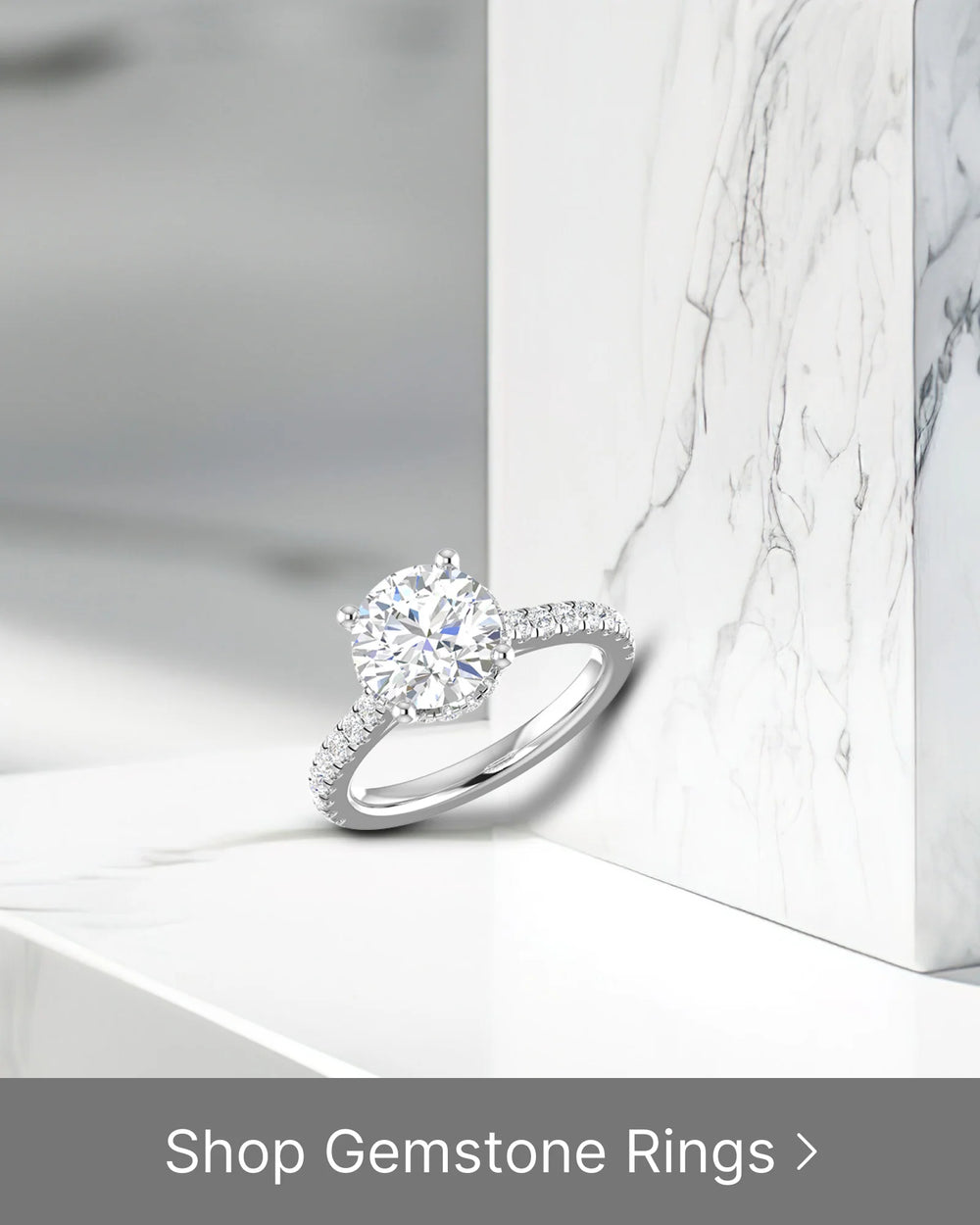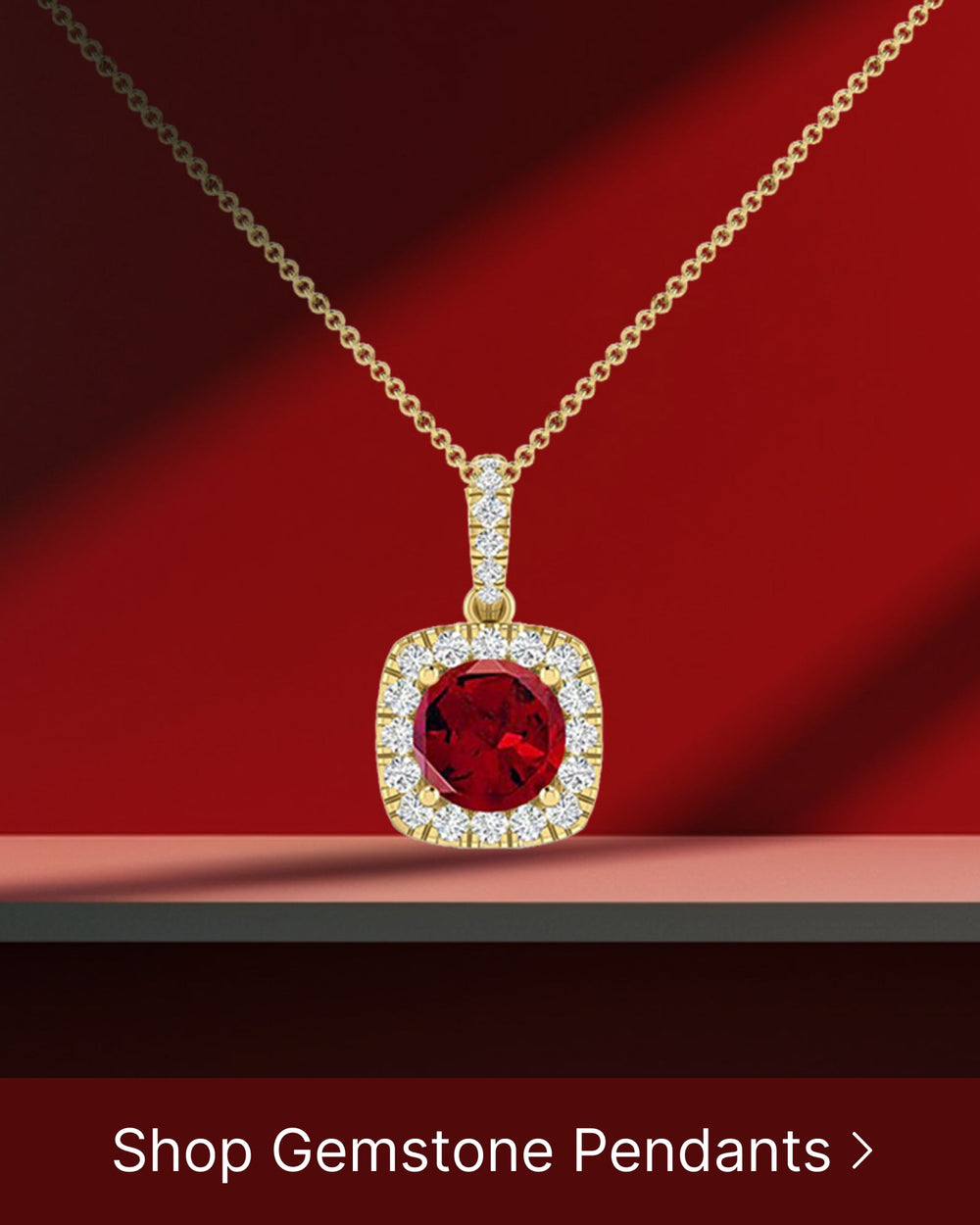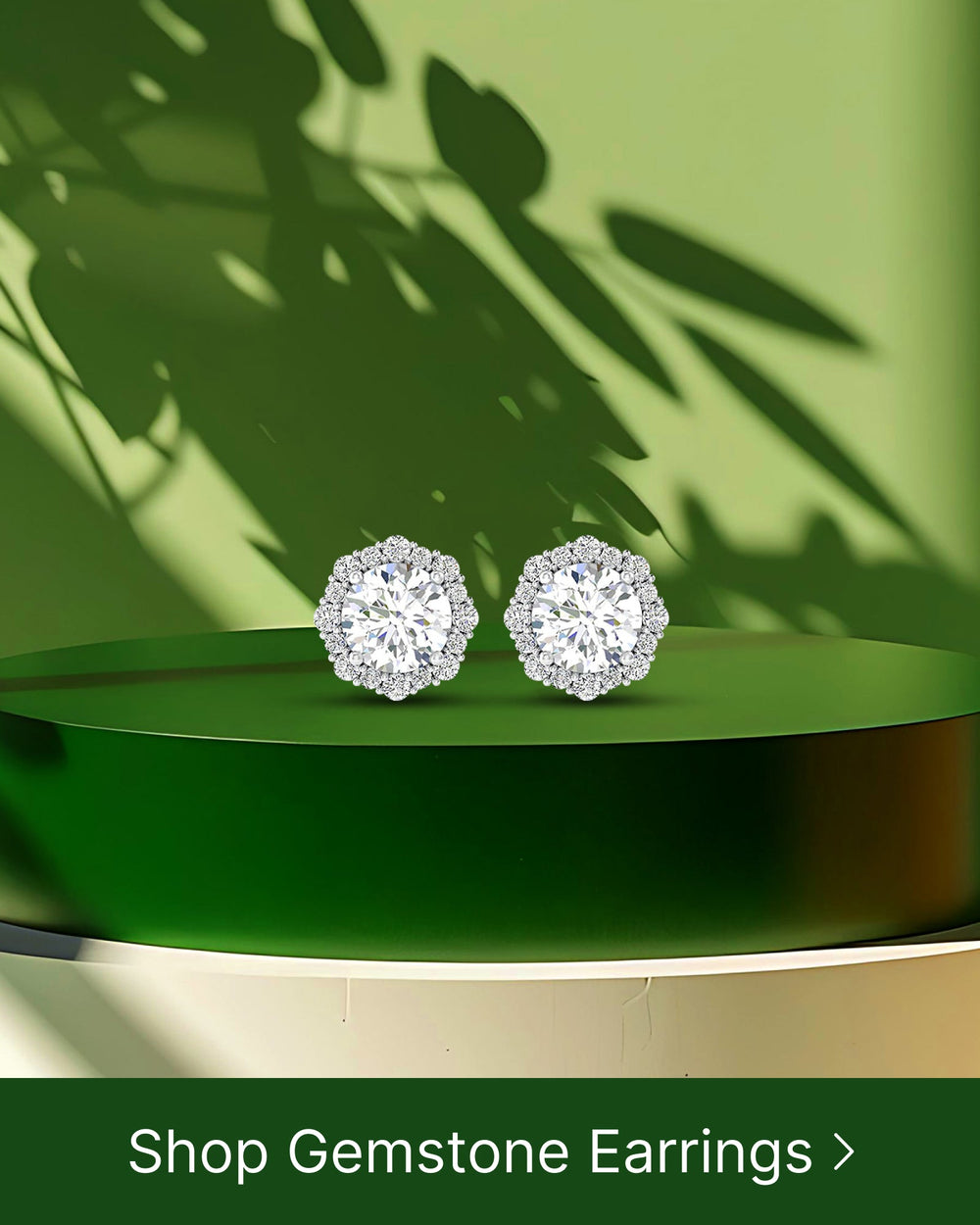Jewelry is a beloved accessory that adds sparkle and style to any outfit. However, for individuals with sensitive skin or allergies, wearing certain types of jewelry can lead to discomfort and irritation. If you're someone who experiences jewelry allergies, fear not! There is a solution: hypoallergenic jewelry. In this comprehensive guide, we will explore the world of hypoallergenic jewelry and provide you with valuable information to help you find allergy-free options that you can wear with confidence and comfort.
Understanding Jewelry Allergies
Before delving into hypoallergenic jewelry, it is important to understand what causes jewelry allergies. Common allergens found in jewelry include nickel, cobalt, and certain metals like brass and copper. When these metals come into contact with the skin, they can trigger an allergic reaction, leading to redness, itching, and rashes.
If you find yourself experiencing these symptoms after wearing jewelry, it is highly likely that you have a jewelry allergy. The good news is that hypoallergenic jewelry can provide relief and allow you to enjoy wearing your favorite accessories once again.
Common Allergens in Jewelry
One of the most prevalent allergens in jewelry is nickel. This metal is often used as a base in many types of jewelry, including earrings, necklaces, and bracelets. While nickel itself is not harmful, it can cause an allergic reaction in those who have a sensitivity to it.
Cobalt is another common allergen found in jewelry, particularly in white gold pieces. This metal is added to gold alloys to enhance their strength and durability. Unfortunately, cobalt can also trigger allergic reactions in some individuals.
Brass and copper are also known to cause allergies in certain people. Brass, which is an alloy of copper and zinc, can sometimes contain traces of nickel, leading to allergic reactions. Copper, on the other hand, can cause discoloration of the skin and even leave green marks due to a chemical reaction with sweat.
Symptoms of Jewelry Allergies
If you suspect that you have a jewelry allergy, it is crucial to be aware of the symptoms. Common signs of a jewelry allergy include redness, itching, swelling, and the development of a rash or blisters. These symptoms typically appear in the area where the jewelry comes into direct contact with the skin.
In some cases, the allergic reaction may be severe, leading to hives, intense itching, and even difficulty breathing. This is known as anaphylaxis and requires immediate medical attention. It is important to consult a healthcare professional if you experience any severe symptoms after wearing jewelry.
It's important to note that jewelry allergies can develop over time, even if you have been wearing specific pieces without any issues. This is because repeated exposure to allergens can sensitize the immune system, making it more prone to reacting. So, if you start experiencing any of the aforementioned symptoms, it may be time to consider hypoallergenic jewelry as a safer alternative.
Hypoallergenic jewelry is specifically designed to minimize the risk of allergic reactions. These pieces are made from materials that are less likely to cause allergies, such as surgical stainless steel, titanium, and certain types of gold that are alloyed with hypoallergenic metals like palladium or platinum. By opting for hypoallergenic jewelry, you can still enjoy accessorizing without worrying about the unpleasant symptoms of a jewelry allergy.
The Science Behind Hypoallergenic Jewelry
So, what exactly makes jewelry hypoallergenic? The term "hypoallergenic" refers to materials that have a low likelihood of causing an allergic reaction. In the case of hypoallergenic jewelry, these pieces are made from materials that are less likely to trigger allergies.
But what are these materials and how do they work? Let's dive deeper into the science behind hypoallergenic jewelry.
What Makes Jewelry Hypoallergenic?
Hypoallergenic jewelry is typically made from metals that are known for their non-reactive properties. Some examples of hypoallergenic materials include pure gold, platinum, and stainless steel. These metals are less likely to cause irritation as they do not contain common allergens like nickel or cobalt.
But why are these metals less likely to cause allergies? It all comes down to their chemical composition. Pure gold and platinum, for example, are considered inert metals, meaning they are extremely stable and do not readily react with other substances. Stainless steel, on the other hand, is an alloy made primarily of iron, chromium, and nickel, but the nickel content is usually low enough to avoid triggering allergic reactions.
In addition to using hypoallergenic metals, brands may also employ a specialized coating or plating process to further reduce the risk of an allergic reaction. This coating creates a barrier between the skin and the metal, preventing direct contact and minimizing the chances of irritation.
Furthermore, hypoallergenic jewelry often undergoes rigorous testing and certification processes to ensure its safety for individuals with sensitive skin. These certifications provide peace of mind for consumers, knowing that the jewelry they are purchasing has met strict standards for hypoallergenic properties.
The Role of Nickel in Jewelry Allergies
As mentioned earlier, nickel is a prime culprit in jewelry allergies. It is one of the most common allergens, affecting a significant portion of the population. Therefore, when shopping for hypoallergenic jewelry, it is crucial to find pieces that are nickel-free. Look for labels or certifications that guarantee the absence of nickel in the materials used.
But why is nickel such a common allergen? The answer lies in its ability to cause a delayed hypersensitivity reaction in some individuals. When nickel comes into contact with the skin, it can penetrate the outer layer and bind to proteins, triggering an immune response. This immune response leads to the release of chemicals that cause inflammation and itching.
By opting for nickel-free jewelry, you can significantly reduce the risk of developing an allergic reaction. This is especially important for individuals with severe nickel allergies, as even trace amounts of the metal can trigger a response.
It's worth noting that while hypoallergenic jewelry greatly reduces the risk of allergies, it does not guarantee complete immunity for everyone. Allergies can vary from person to person, and some individuals may still experience reactions to certain hypoallergenic materials. It's always a good idea to test a small area of your skin before wearing any new jewelry for an extended period.
In conclusion, hypoallergenic jewelry offers a solution for individuals with sensitive skin who want to enjoy the beauty of accessories without worrying about allergic reactions. By understanding the science behind hypoallergenic materials and the role of allergens like nickel, you can make informed choices when it comes to selecting jewelry that suits your needs and style.
Exploring Hypoallergenic Jewelry Materials
Now that you understand the science behind hypoallergenic jewelry, let's explore some of the most common hypoallergenic materials available in the market.
Gold and Platinum
Pure gold and platinum are excellent choices for those with sensitive skin. These precious metals do not contain nickel or other common allergens, making them a safe option for individuals prone to jewelry allergies. When shopping for gold jewelry, look for pieces labeled as 24-karat or 18-karat, as they have higher gold content and are less likely to cause irritation.
Sterling Silver
Sterling silver is another popular hypoallergenic option. It is made from 92.5% pure silver and 7.5% other metals, which are typically copper or zinc. While copper can potentially cause reactions in some individuals, sterling silver is generally well-tolerated due to its low nickel content. Look for pieces that are labeled as "nickel-free" or "hypoallergenic" to ensure maximum comfort.
Titanium and Stainless Steel
Titanium and stainless steel are highly durable and hypoallergenic materials commonly used in jewelry. These metals have a low reactivity rate, making them suitable for individuals with even the most sensitive skin. Additionally, both titanium and stainless steel are resistant to tarnishing and corrosion, ensuring long-lasting beauty.
Shopping for Allergy-Free Jewelry
Now that you are familiar with hypoallergenic jewelry materials, let's discuss how to find and purchase the perfect pieces for your collection.
Recognizing Hypoallergenic Labels
When shopping for hypoallergenic jewelry, keep an eye out for specific labels that indicate the product's allergy-free properties. Look for terms such as "hypoallergenic," "nickel-free," "allergy-free," or "sensitive skin-friendly." These labels ensure that the jewelry has been made with materials that are less likely to cause an allergic reaction.
Questions to Ask Your Jeweler
If you have any doubts about the hypoallergenic nature of a particular piece of jewelry, don't hesitate to ask your jeweler for more information. Inquire about the materials used, the presence of nickel or other allergens, and the coating or plating process, if applicable. A reputable jeweler will be able to provide you with detailed answers and guide you towards the best hypoallergenic options.
Caring for Hypoallergenic Jewelry
Once you've found your perfect hypoallergenic jewelry pieces, it's important to know how to take care of them to ensure their longevity and maintain their hypoallergenic properties.
Cleaning and Storage Tips
Regular cleaning is essential to keep your hypoallergenic jewelry looking pristine and free from irritants. Use mild soap, warm water, and a soft cloth to clean your jewelry, taking care to remove any buildup or residue. Avoid harsh chemicals or abrasive cleaners, as they can damage the metal and compromise its hypoallergenic properties.
When not wearing your jewelry, store it in a separate compartment or pouch to prevent scratching and minimize exposure to potential allergens. This will help maintain its pristine condition and reduce the risk of allergic reactions when you wear it again.
Regular Maintenance for Longevity
To ensure the longevity of your hypoallergenic jewelry, it is essential to practice regular maintenance. Avoid exposing your pieces to harsh chemicals, such as cleaning products or perfumes, as they can tarnish the metal and potentially cause irritation.
Additionally, periodically check your jewelry for any signs of wear or damage, such as loose stones or broken clasps. Taking proactive measures to repair or replace damaged components will help preserve the hypoallergenic integrity of your jewelry.
By following these care instructions and staying vigilant, you can enjoy your allergy-free jewelry for years to come, without compromising your comfort or style.
In conclusion, hypoallergenic jewelry provides a viable solution for individuals with jewelry allergies. By understanding the materials used in hypoallergenic jewelry, recognizing allergy-free labels, and practicing proper care, you can confidently express your personal style through stylish accessories that won't cause discomfort or irritation. So, go ahead and explore the wide range of hypoallergenic options available, and embrace the joy of wearing beautiful jewelry without the worry of allergic reactions.







